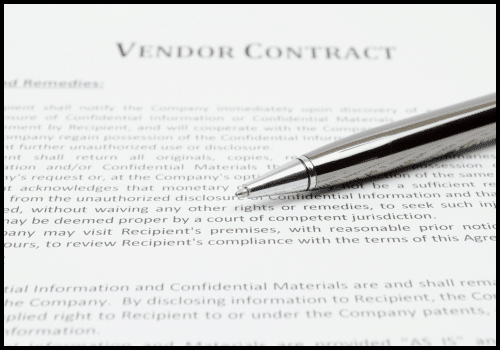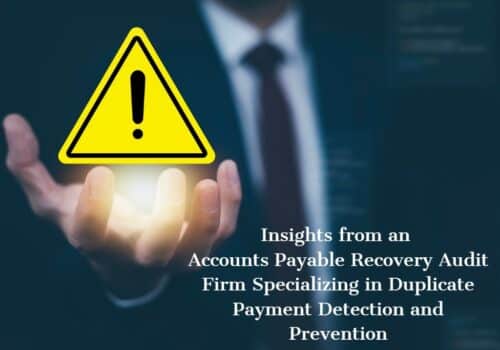
Companies with a large, complex supply chain have many issues to deal with including shipping delays, receiving issues, and inefficiencies within the procure-to-pay process.
If you purchase a large volume of materials, goods for sale, or supplies then you may have an overstated Goods Received Not Invoiced (commonly referred to as RNI) balance. In today’s environment, the last thing a company wants or needs is a growing RNI balance impacting the P/L and Balance Sheet.
Some of the transactions on the RNI report will be resolved in the short term. Suppliers will call asking for payment of open invoices that will tie to PO’s on the RNI report. However, what happens to those receipts that remain and age on your report? Many companies find that the RNI number increases over time and they rarely use internal resources to clear the report.
Do I have a Problem?
Most PO’s on the RNI report will resolve themselves through the normal course of business within one to two months. Three months could be considered current depending upon your system. Older receipts are an indication of a problem depending upon the materiality of the total. We have seen situations where the RNI number over two months old has ranged from $7.5m to well over $25m. An analysis of these older receipts showed that an overwhelming percentage of them were either not open or represented truly open invoices that needed to be paid.
The pandemic may have compounded RNI occurrences for many organizations. The scope of potential issues has been enhanced due to staffing issues, supply chain challenges and working remotely. These issues could have impacted your organization and your suppliers, making for a more complex P2P transaction.
A Growing RNI Balance
Factors that could cause an overstated RNI include:
- Receiving issues
- Wrong quantity received
- Mismatched unit of measures between the PO and the Invoice
- Delivery to the wrong warehouse or distribution center
- Mismatch of PO to receipt
- Company allows receipt without a PO
The issues with a growing or large RNI include:
- Overstating Liabilities
- Overstating Inventory
- Open and unpaid vendor invoices
- Excessive drain on company resources
A large RNI problem will certainly catch the eye of your accountants at some point as your P/L and Balance Sheet will not properly reflect your monthly, quarterly, or annual numbers.
The Process to Clean Up RNI
You can correct an overstated RNI by:
- Reviewing problem vendors to get to the root cause. Identify why PO’s are not systematically matched to invoices and receipts, and correct those issues to prevent them from occurring going forward.
- Reviewing large dollar open purchase orders to unmatched receipts manually, matching them up and paying the invoice.
This type of review can be extremely time consuming depending upon the volume of transactions.
A write off may temporarily solve the issue but the RNI balance will continue to grow, and you will not get to the root cause of the problem. Another negative to a write off, is your P/L will be understated in one period and overstated in another.
Who can help?
You could hire an Accounting/Consulting firm to review RNI but that will be very expensive (hourly rates are very high) and they may not be the best at analyzing large volumes of data from disparate systems.
The best solution may be to hire a Recovery Audit firm to look at this problem. Recovery Audit firms are experts at analyzing large volumes of PO/Receiving data and will be familiar with your vendor community. Find a firm that will identify the root causes, provide an assessment of the current processes, and additional internal control recommendations.
Contact Strategic Audit Solutions to discuss your company’s situation and how we can help you resolve this issue.
SAS Insights

The SaaS Revolution- Your Recovery Audit Secret Weapon
The SaaS Revolution: Your Recovery Audit Secret Weapon Let’s be honest, cloud migration isn’t exactly breaking news. But you know what is? The explosive growth of SaaS adoption. Reports1 indicate […]
Continue Reading
AP Recovery Audits- The Essential Guide to Protecting Your Bottom Line
AP Recovery Audits- The Essential Guide to Protecting Your Bottom Line Organizations process millions of transactions annually. Amid this volume, errors are inevitable. Whether it’s duplicate payments, missed credits, or […]
Continue Reading
The Importance of Maintaining a Clean Vendor Master File
The Importance of Maintaining a Clean Vendor Master File The vendor master file is a cornerstone of accounts payable operations and plays a crucial role in maintaining financial integrity and […]
Continue Reading
Mastering Duplicate Payment Prevention
Introduction In the intricate landscape of Accounts Payable, one of the most insidious threats lurking in the shadows is that of duplicate payments. These seemingly innocent errors can have far-reaching […]
Continue Reading
